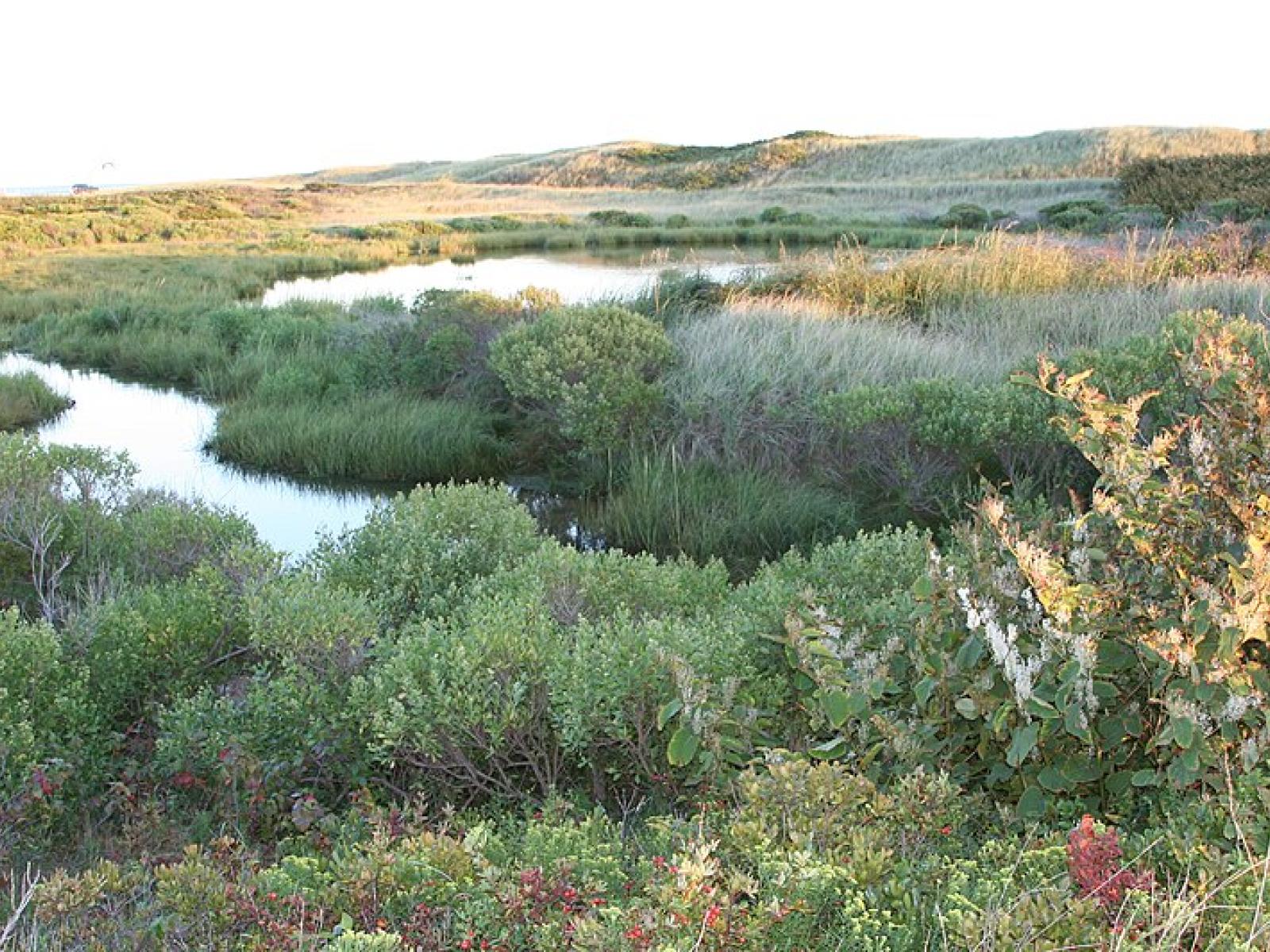Coastal Collaborators: Water, Plants, and Ecosystems
Understanding the complexities of biogeochemical interactions on material and carbon cycling in coastal areas

Dissolved oxygen (DO) saturation levels were measured from ground level to several meters below during two major weather events. Heavy precipitation shifted the DO saturation zone downward, while tidal-induced seawater flooding transports oxygenated water to the transition zone, enhancing aerobic respiration.
(Image by William Waterway | Wikimedia Commons)
The Science
Due to their inherent variability and complexity over space and time, scientists are challenged to understand the complex interactions among soil, vegetation, and water along coastal terrestrial-aquatic interfaces (TAI). This research addresses this challenge by using highly mechanistic numerical models to simulate how water movement and carbon cycling affect the interactions among water, plants, and microbes at the TAI. The simulations identified an active zone of water exchange and carbon cycling under the transition zones between wetlands and uplands. The modeling also shows that vegetation enhances the exchange of water and carbon through evapotranspiration and the generation of organic carbon for aerobic respiration. These insights can help inform coastal mitigation strategies under environmental and climate changes.
The Impact
Understanding the complex interactions among soil, vegetation, and water along coastal TAI is critical to the management of these valuable environments, especially in light of climate change. This research highlights the need to incorporate interactions among ecological, hydrologic, microbial, and biogeochemical processes in carbon cycling studies of coastal ecosystems. While this study is not the first of its kind, it built upon previous work, using advanced modeling techniques to provide a more detailed understanding of these processes. This information is key to refining Earth system models, as well as developing targeted interventions for protection of coastal ecosystems as environmental conditions change.
Summary
This study explores the intricate relationships among precipitation, flooding, and biogeochemical processes in coastal ecosystems, using advanced modeling techniques to elucidate these complex dynamics. Researchers integrated the Advanced Terrestrial Simulator and the subsurface flow and transport (PFLOTRAN) model to investigate how hydrological and ecological factors affect oxygen supply, nutrient cycling, and carbon dynamics at coastal TAI. The findings emphasize the important influence of tidal fluctuations and vegetation transpiration on spatial and temporal variations in soil oxygen content, which is critical for understanding the health and resilience of coastal ecosystems. Notably, this study emphasizes the importance of considering microbial responses and soil-water interactions to predict carbon and oxygen fluxes in these environments. This work contributes to the growing knowledge base by helping to inform effective management and conservation strategies for coastal ecosystems under climate change.
Contacts
Xingyuan Chen, corresponding author, Pacific Northwest National Laboratory, xingyuan.chen@pnnl.gov
Vanessa L. Bailey, COMPASS-FME principal investigator, Pacific Northwest National Laboratory, vanessa.bailey@pnnl.gov
Funding
This research is supported by the Department of Energy (DOE), Office of Biological and Environmental Research (BER), as part of BER's Environmental System Science. The contribution originates from the Coastal Observations, Mechanisms, and Predictions Across Systems and Scales - Field, Measurements and Experiments (COMPASS-FME) project, a multi-institutional program led by Pacific Northwest National Laboratory (PNNL). PNNL is operated for DOE by Battelle Memorial Institute. The research utilized the COMPASS Supercomputer for model simulations. This paper presents objective technical results and analysis. Any subjective views or opinions expressed herein do not necessarily represent the views of the DOE or the United States Government.
Related Links
Published: July 8, 2025
Li, B., Z. Li, J. Zheng, P. Jiant, J. Holmquist, P. J. Regier, et al. 2024. “Integrated Effects of Site Hydrology and Vegetation on Exchange Fluxes and Nutrient Cycling at a Coastal Terrestrial-Aquatic Interface.” Water Resources Research 60(6). [DOI: 10.1029/2023WR035580].